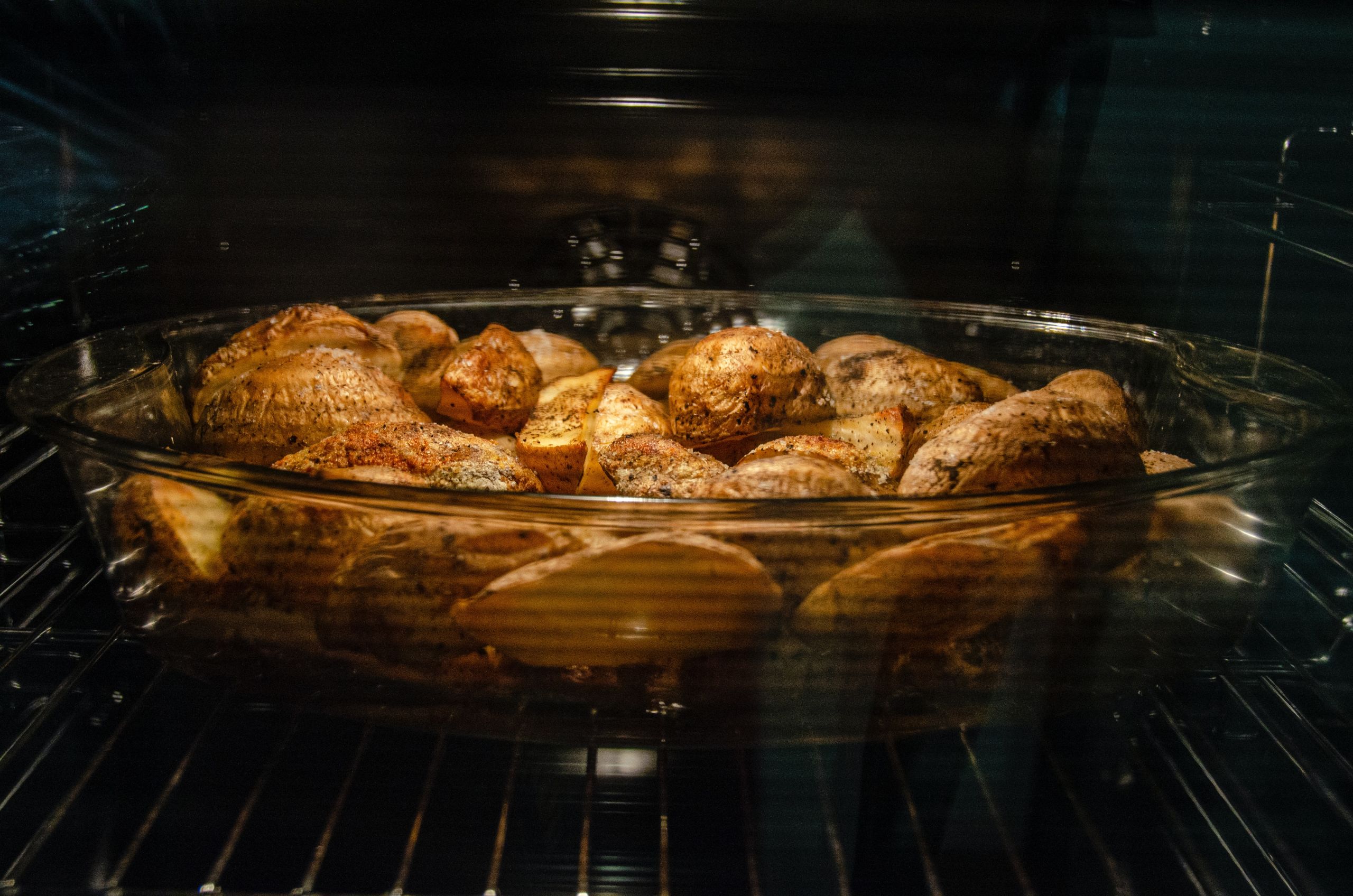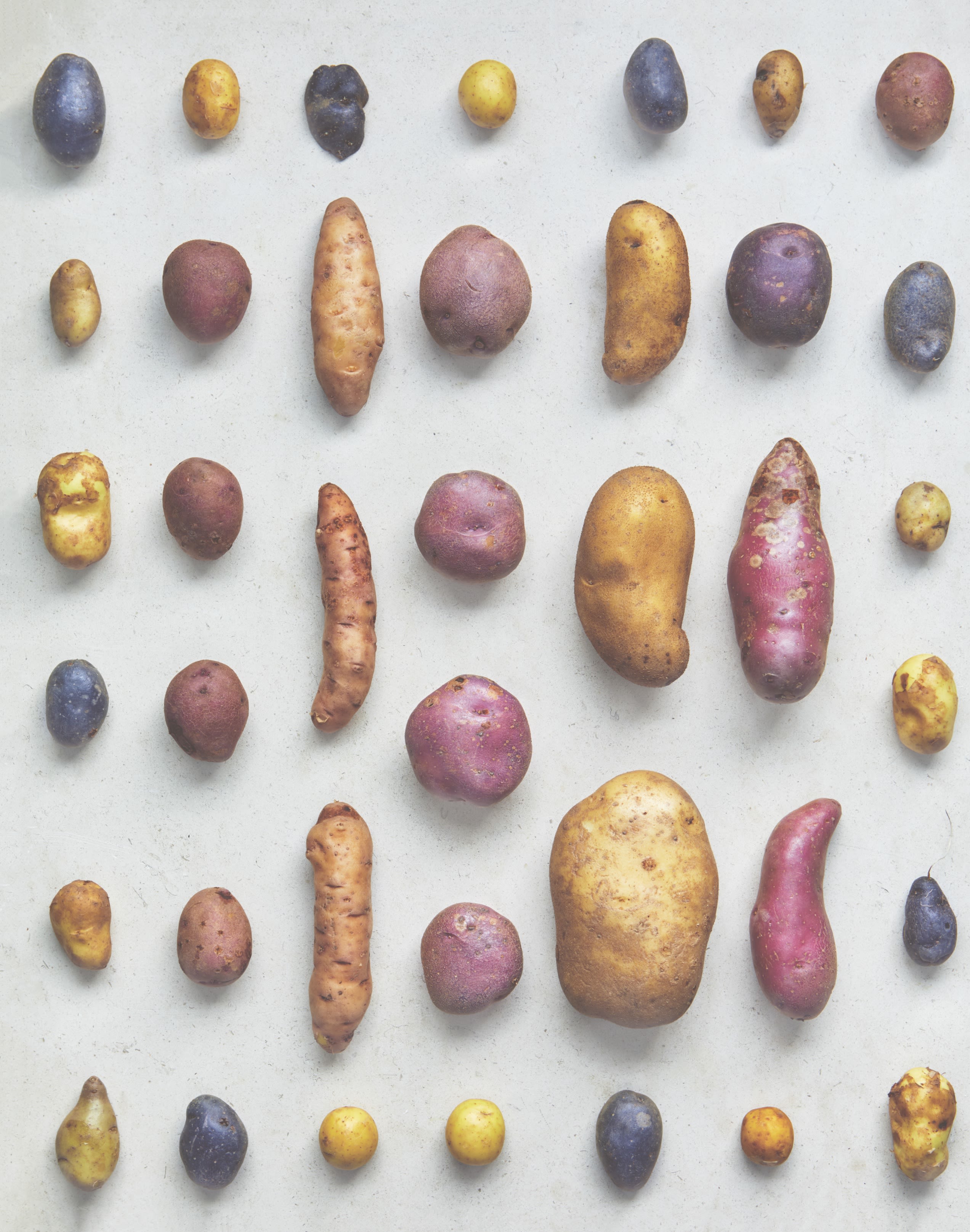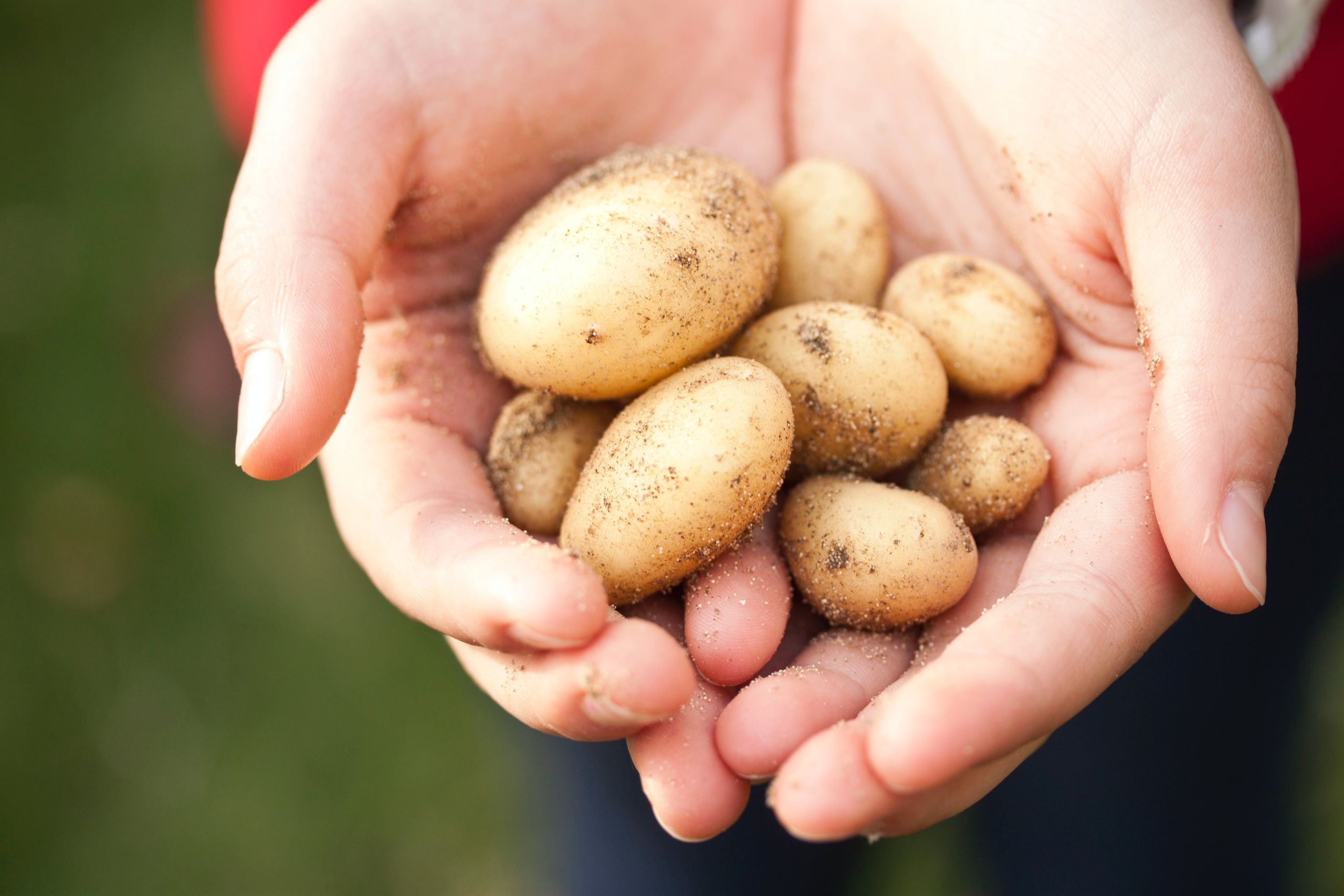Sea-salt Baked Potatoes
Chef Tom Hunt

"My parents made us these salt-baked potatoes as a no-fuss supper
when we were kids, simply served with homemade coleslaw and baked beans or other vegetables.
There is no oil used in the recipe: water alone miraculously sticks the salt to the potato, which then dries into a sparkling crust."
– Tom Hunt –

Ingredients
1 tbsp sea salt
6–8 small–medium potatoes*
Method
- Preheat the oven to 180°C/350°F/Gas Mark 4.
- Pour the sea salt into a wide bowl. Wash the potatoes and drip dry. While they are still wet, roll them in the salt to coat the exterior and place on a baking tray. Save any salt leftover for cooking other dishes. Bake in the oven for 1 hour or until the potatoes are cooked and soft when pricked with a knife.
- Serve hot or cold accompanied with any side or salad you wish. I like them with a little extra virgin olive oil mashed into the flesh.
*Varieties displayed in main image: Arran Victor 1918, Linda 1974, Mayan God, Pink Fir Apple 1850, Pippa, Red Emmalie, Sharpe’s Express 1900, Shetland Black, Violetta, Yukon Gold 1980
Photo Credit: Eating for People, Pleasure & Planet by Tom Hunt is published by Kyle Books, £26.00, www.octopusbooks.co.uk
Photography: Jenny Zarins

Notes from the Chef
Potatoes are a golden – and sometimes a purple or blue – gift from the Incan gods, first cultivated from wild varieties about 8,000 years ago around Lake Titicaca in the foothills of the Andes. There are 80 varieties of potato grown in the UK alone and more than 4,000 varieties are grown around the world, most of which are grown in Peru and Bolivia. It is this diversity that makes them a resilient crop to pests and disease.
Buy potatoes from farmers who avoid pesticides, wherever possible, as they are often used routinely and in excess to prevent late blight, a common disease for monoculture crops. Preserve the diversity of different coloured and tasting potatoes by enjoying a wide variety of species whenever you can.
Grow, ‘chit’ and share your own potatoes and seek out other intriguing varieties from markets. Each has a unique texture and flavour profile.


